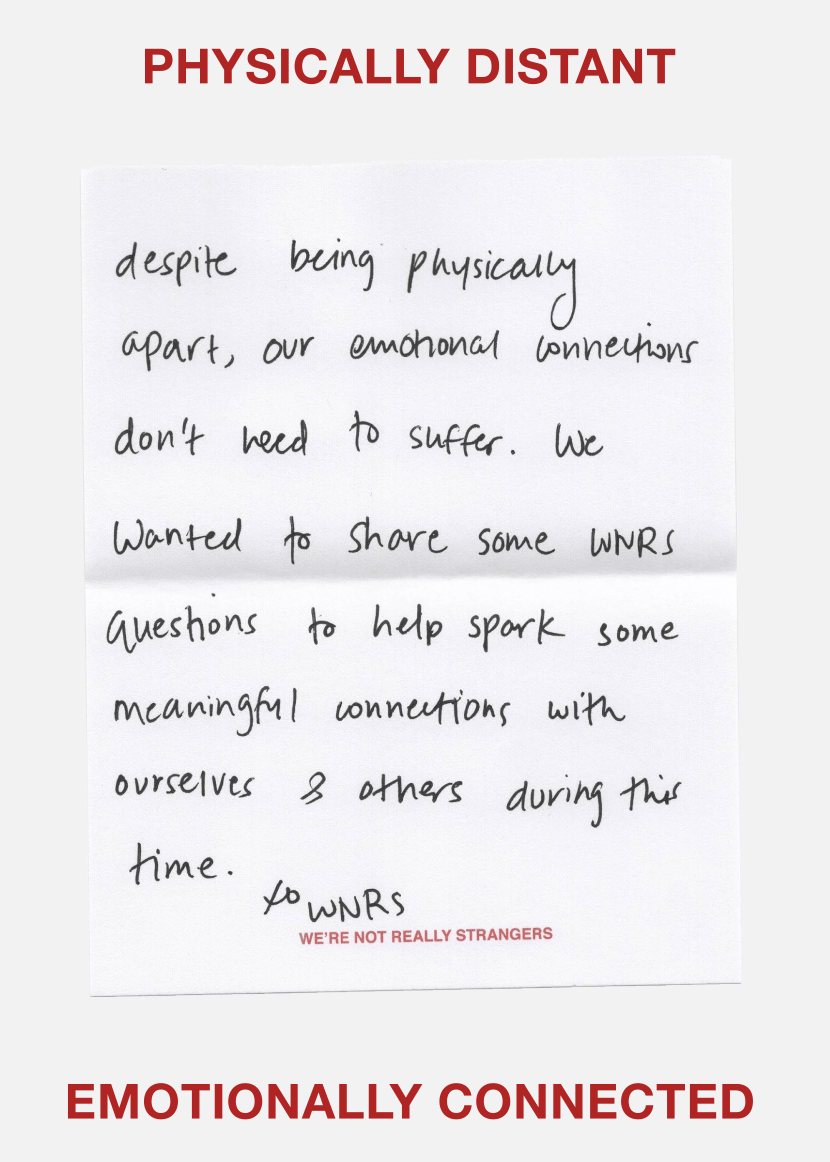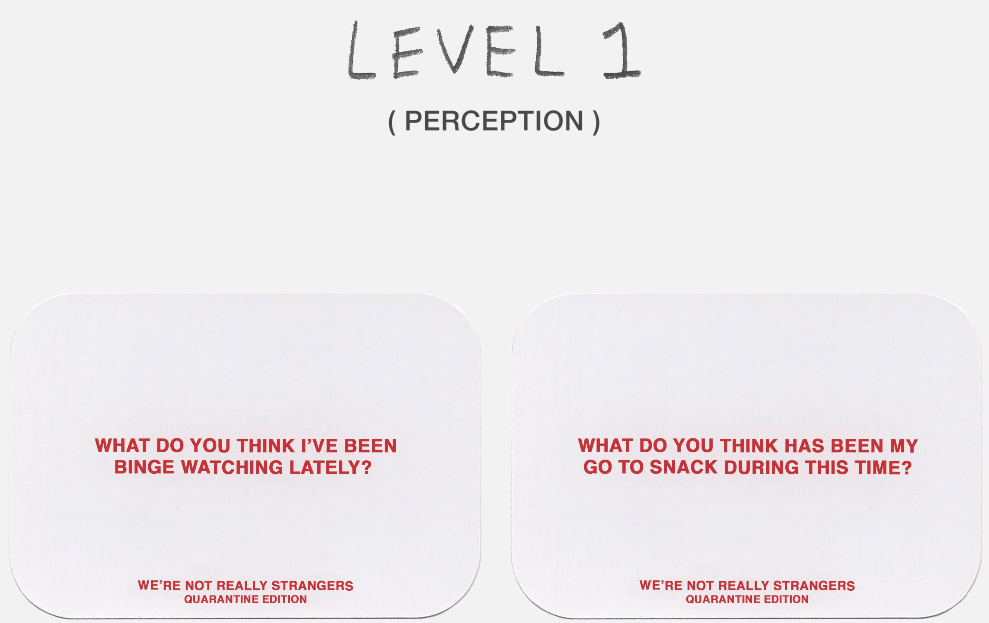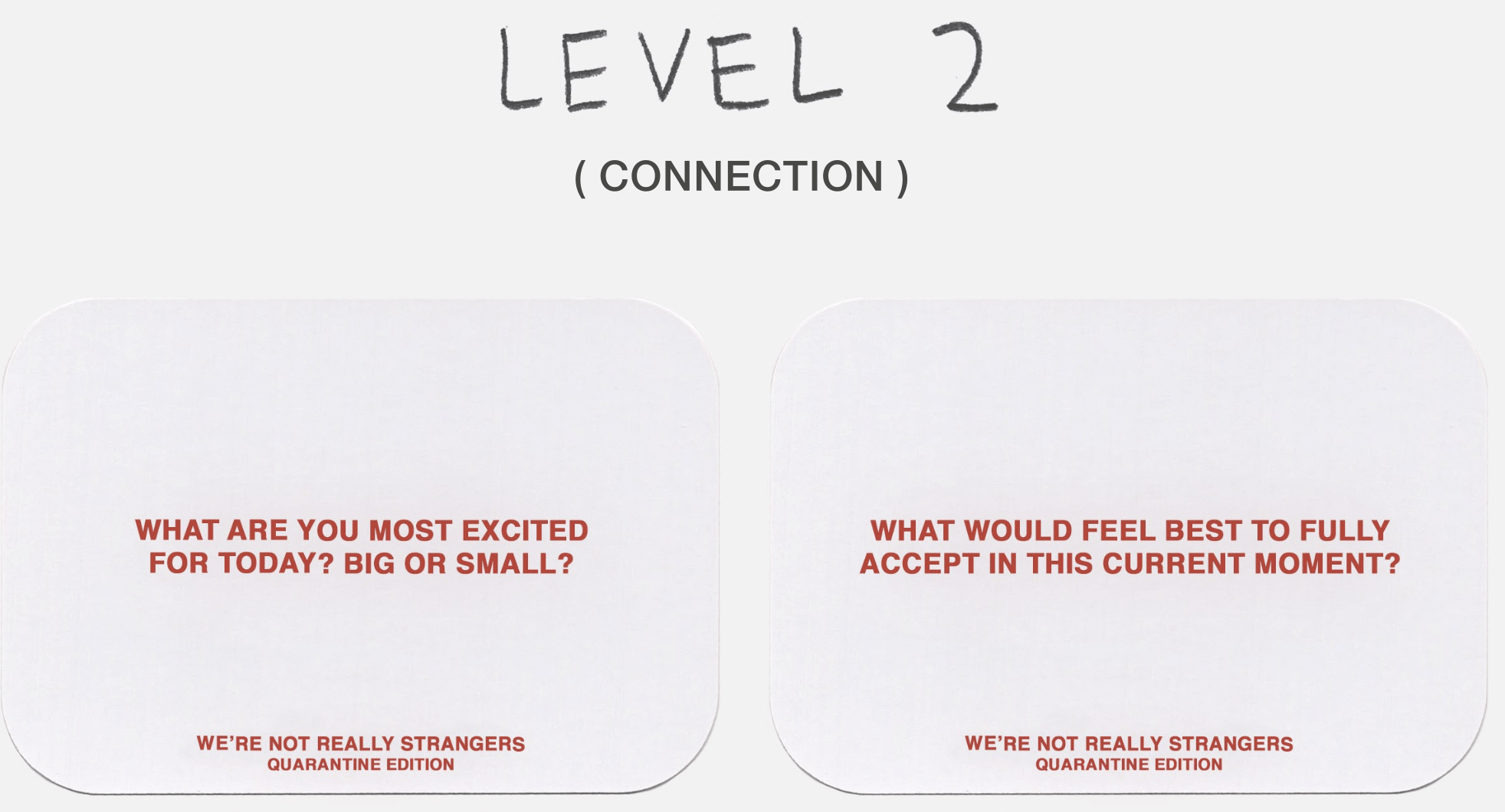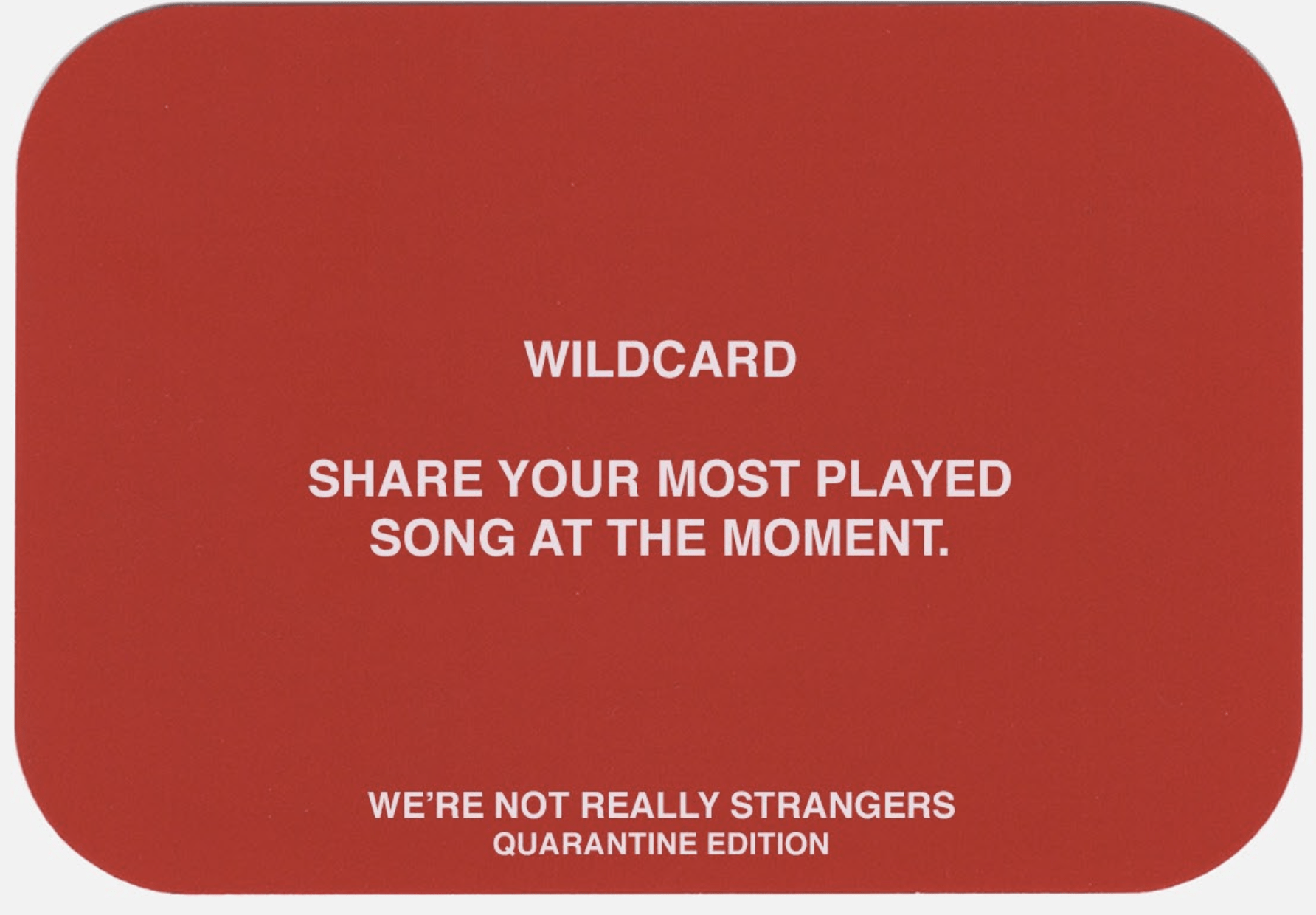I played We’re Not Really Strangers Online Quarantine Edition, a special edition, online version of We’re Not Really Strangers (WNRS). WNRS was created by Koreen Odiney. This edition was meant to be played during the peak of quarantine, but it can still be played today by any people who are physically distant but want to stay emotionally connected.

I played with a loved one from home through FaceTime. Since the entire game was on a PDF, it was easy for me to share my screen and read the instructions and cards together.
WNRS can be played by 2+ players. That being said, although I’ve never played WNRS with more than 2 players, I believe that 2 is the ideal number of players to most effectively reach the objective of the game: building meaningful connections with yourself and with others, supported by the resource of question cards:

When there’s 2 players, you follow the procedure of taking turns asking and answering questions from the cards. When there’s 2+ players, a question is posed and everyone goes around answering the question. While this may increase each player’s quantity of potential connections, it may reduce the quality of each connection. 2 players going back and forth asking and answering questions allows you to focus on only one person. Your entire experience revolves around getting to know more about that person and thinking about what you’d like to share with them. This builds a very strong sense of reciprocity between the two players, because right after one player reveals something intimate and potentially uncomfortable about themself, the next player will have to do the same thing with the next question. It also reduces the risk associated with disclosure because both players know that they are going to be sharing things about themselves.
Players start with Level 1 (Perception) questions, learning about surface level impressions, then advance to Level 2 (Connection) to dig deeper, then Level 3 (Reflection) to reflect on the game experience. I think that dividing the types of questions in levels was a great way to facilitate the aesthetics of fellowship and discovery.
Players are discovering new things about each other, and the depth of these discoveries are determined by the level of questions. Don’t be fooled by the rankings though: just because Level 1 questions aren’t as deep, they’re still really great and fun things to learn about your partner. I asked my partner, What do you think I’ve been binge watching lately? He correctly answered with a show I had just finished, but it also reminded me of a new show I started two days ago that I was excited to share with him. I also learned that his go to snack lately is Kit Kat, which is my favorite type of chocolate bar. Level 1 questions like these are very well designed to start sparking connections and feelings of comfort with each other before advancing to deeper questions. This comfort that built up over time made me feel safer in disclosing more intimate things about myself, which I think supported fellowship throughout the game and ultimately strengthened our connection by the end of the game.

Furthermore, the question cards are what makes WNRS better than other vulnerability games like Truth or Dare. In Truth or Dare, it can be hard to come up with good, appropriate truth questions; someone might ask something too personal too soon without allowing enough time and prior communication to reach that level of trust/comfort first. WNRS allows time for trust to build before reaching deeper questions.
However, I wish that the instructions of the game supported players in having a back and forth conversation about a certain topic. With how the instructions are written, it seems like only the player being asked the question can answer. I would improve WNRS by making a clear, optional rule that both players can answer the question on the card in order to facilitate smoother conversations and further support the aesthetics of discovery and fellowship because more conversation = more opportunity for deepening your connection with your partner.

For a vulnerability game played through FaceTime or Zoom, a card like the one above is awesome because I was able to actually play the song for both of us to listen to through Spotify. Unexpectedly, this created the aesthetic of sensation, because we were both connecting through our sense of hearing. I would like to take this idea further and improve WNRS by facilitating more opportunities for sensation. What if we could take advantage of players’ sense of touch? There could be a wildcard that prompts both players to find something near them that feels a certain way (i.e. find something soft) and have them reveal that item to each other. Discovering more about each other through sensation could help facilitate connection.



